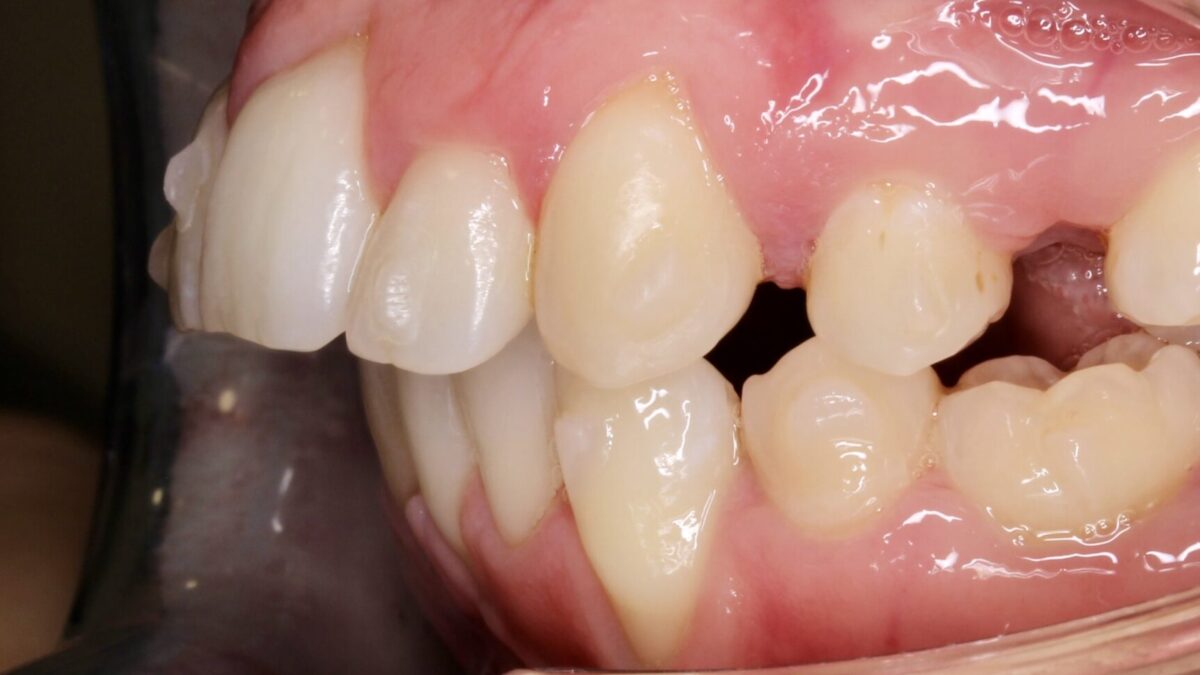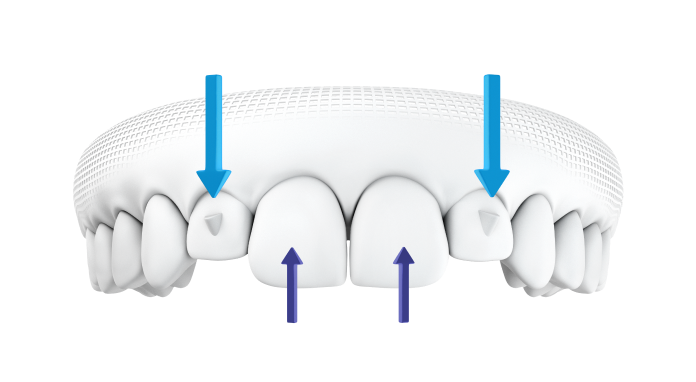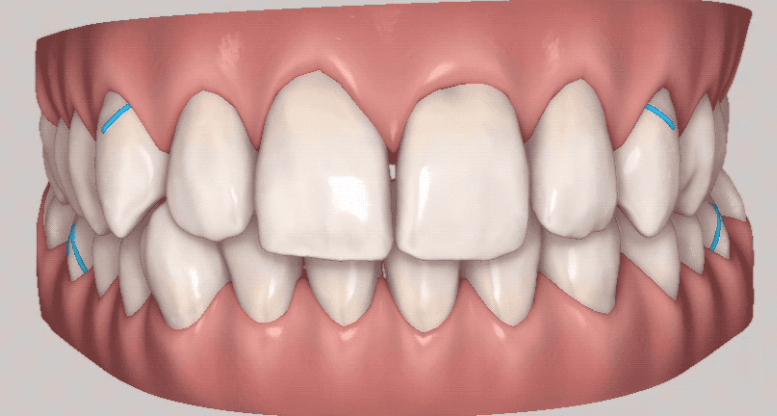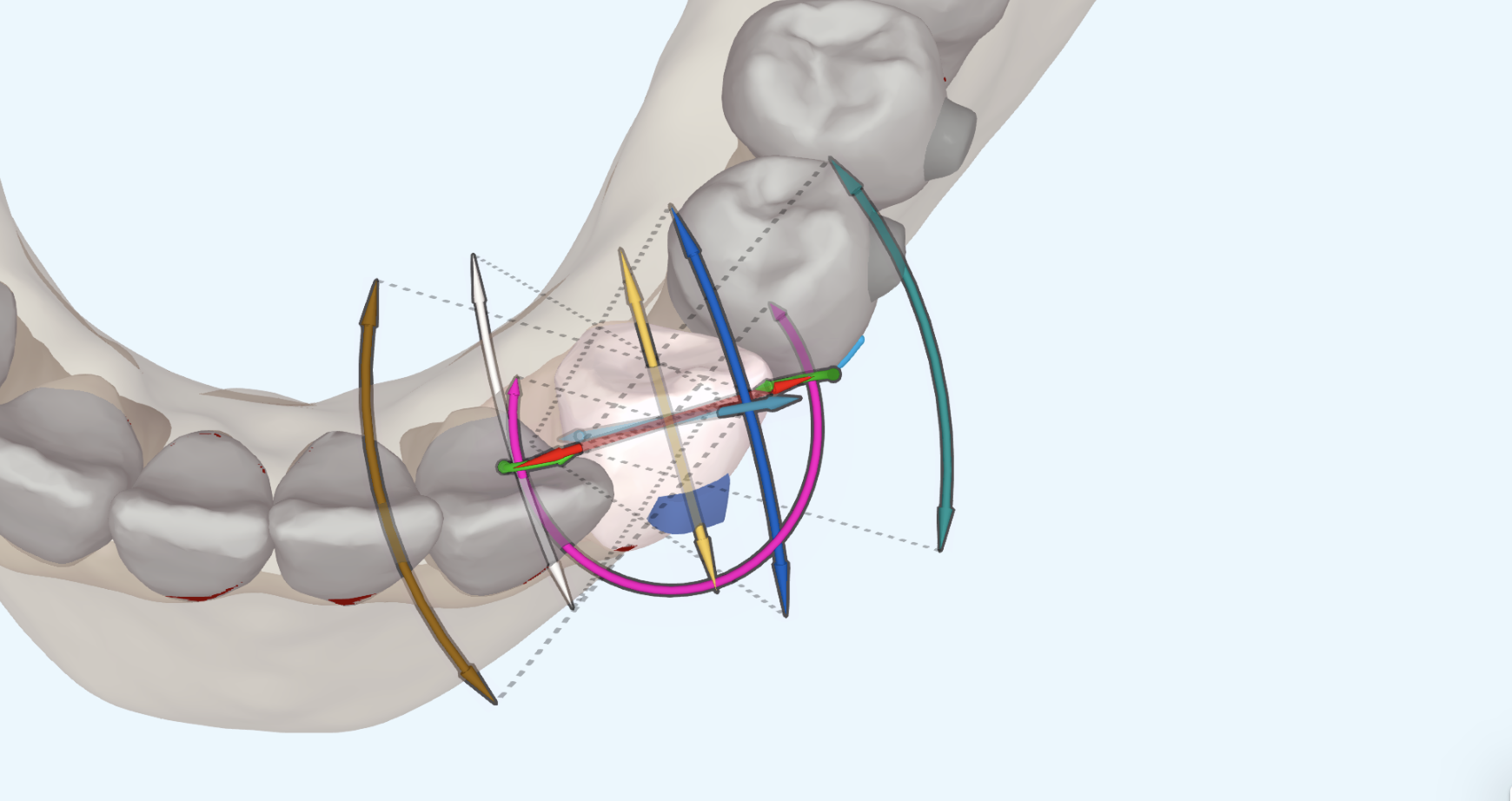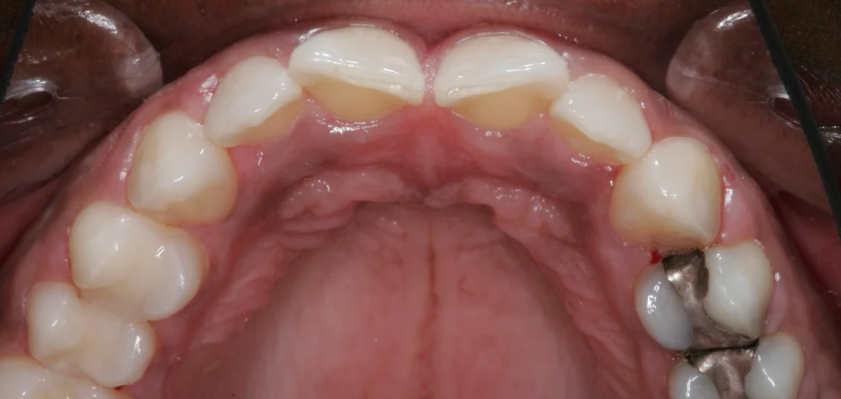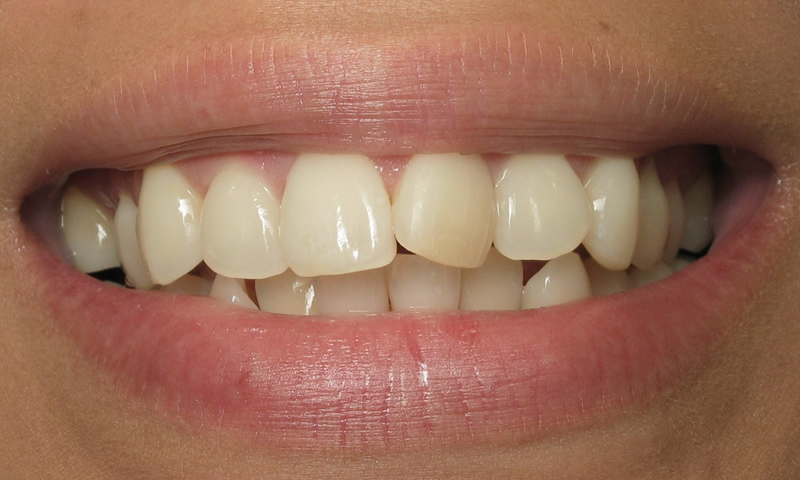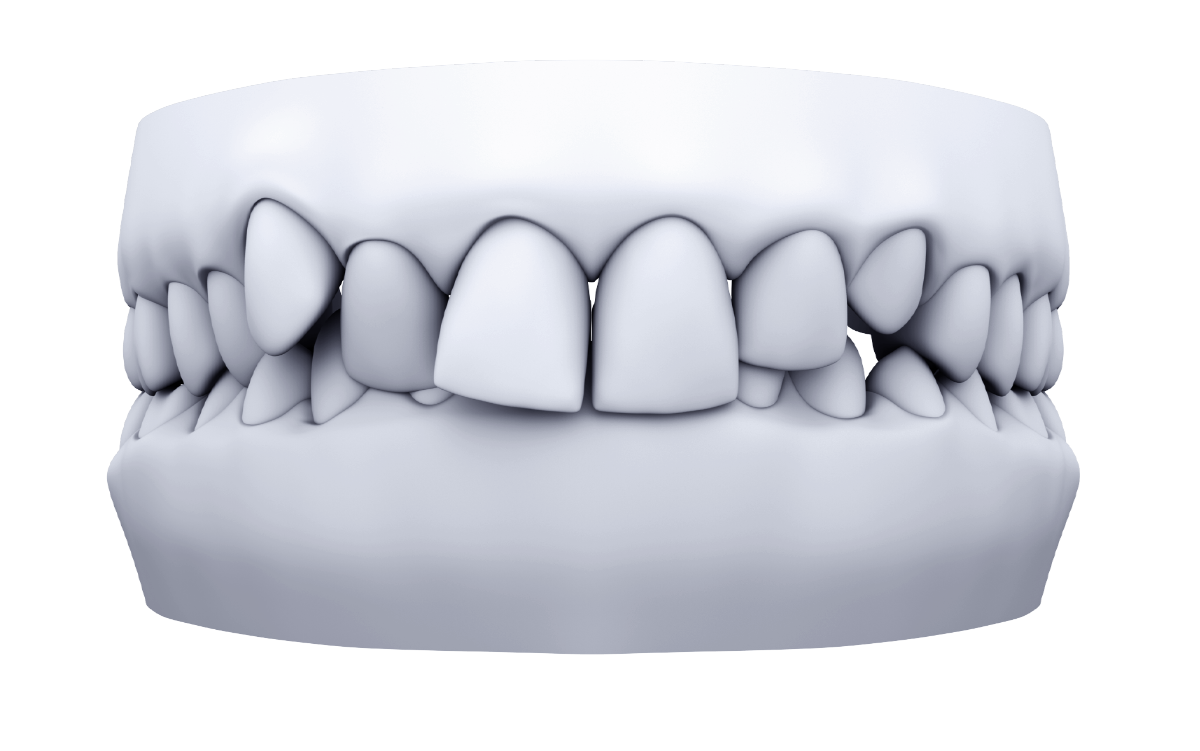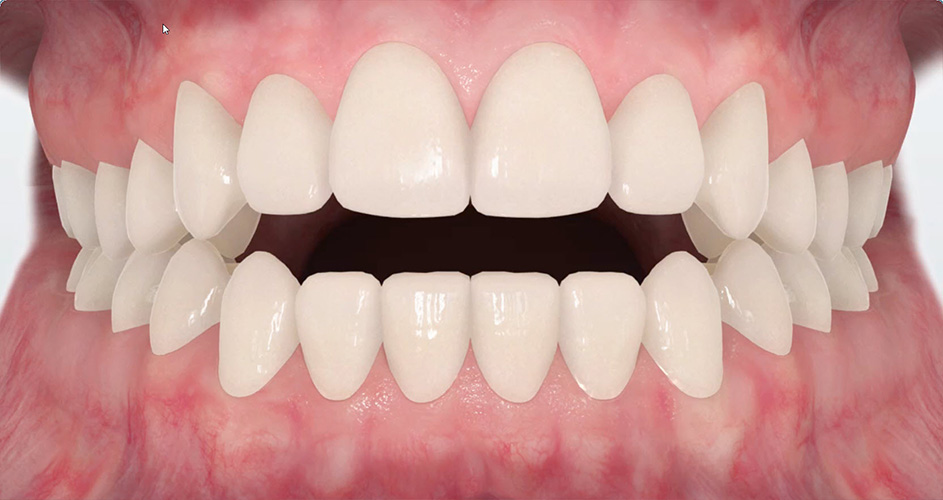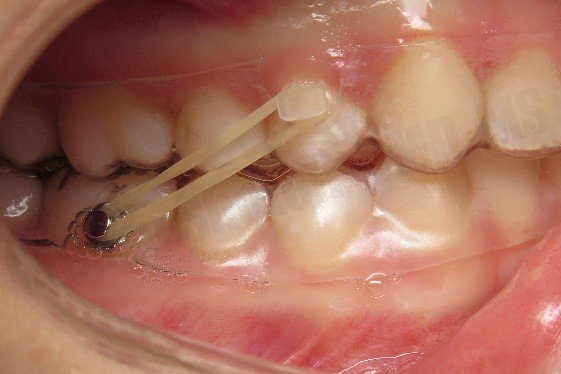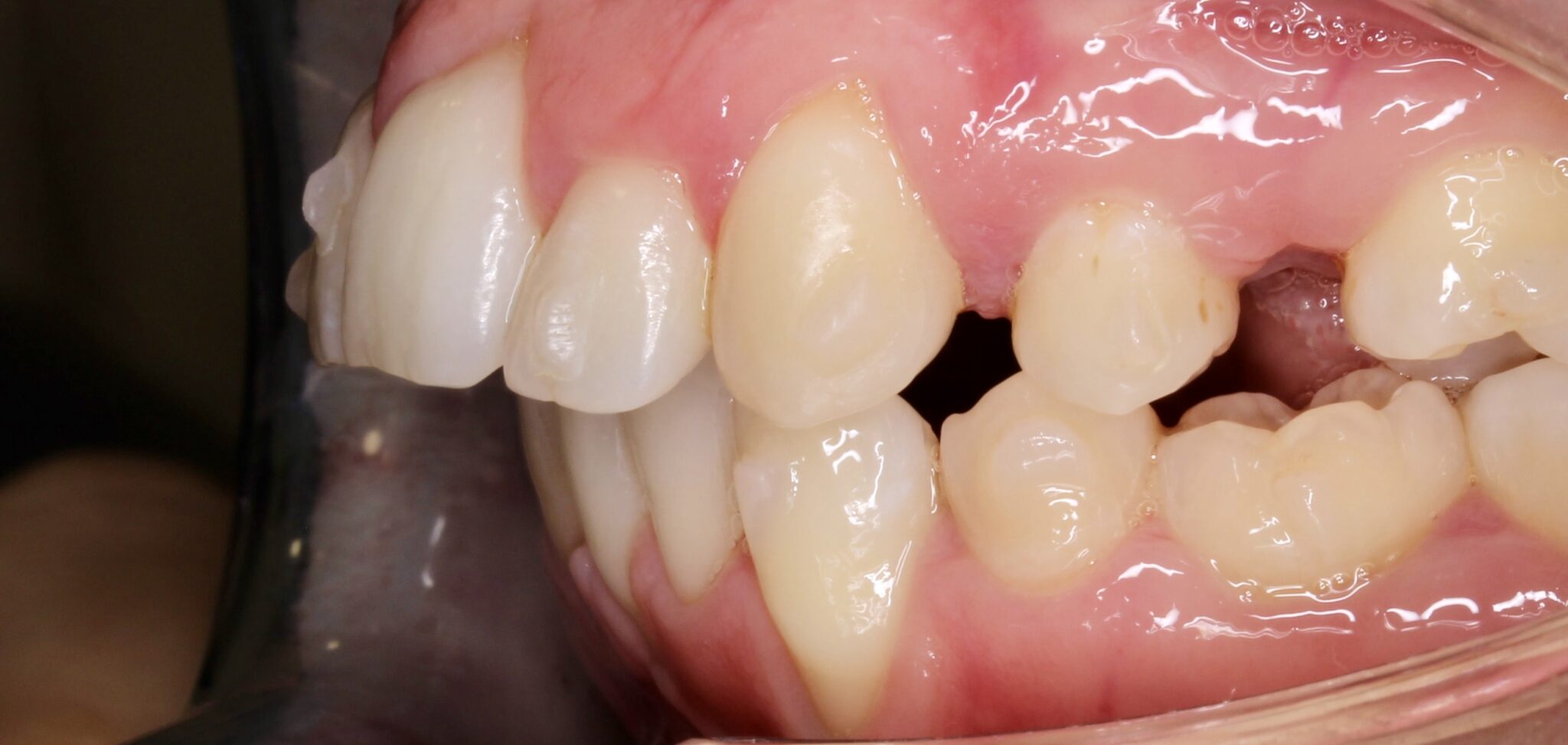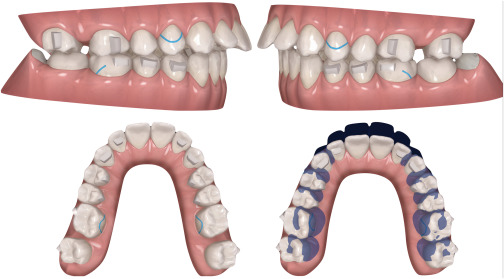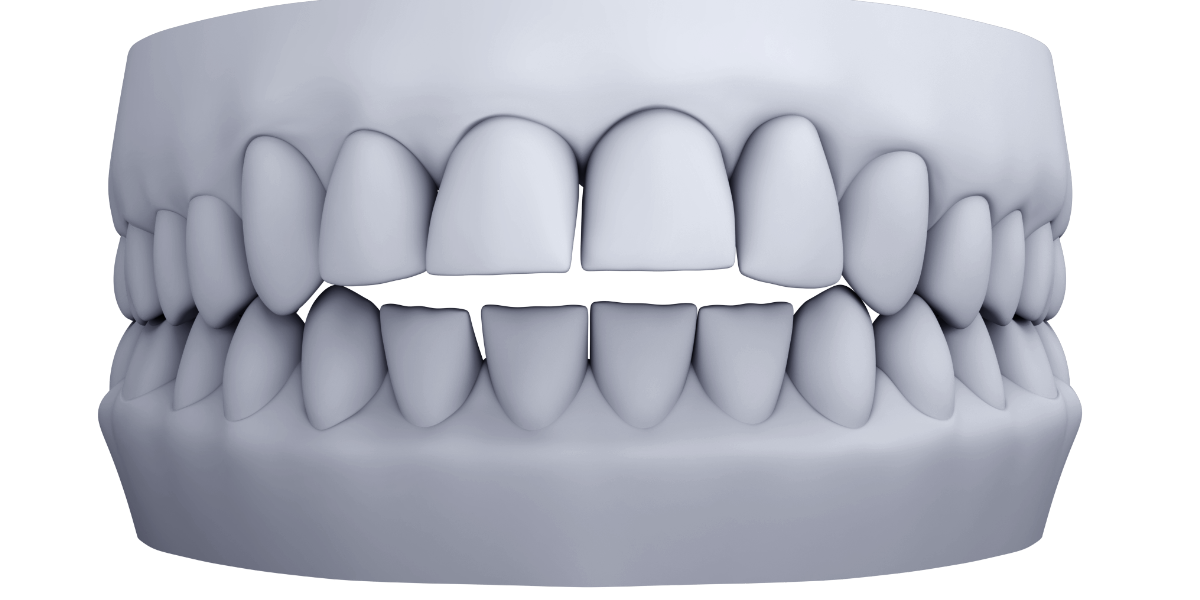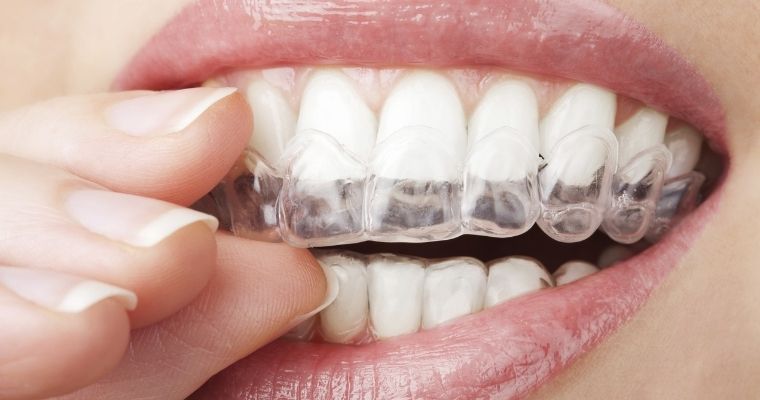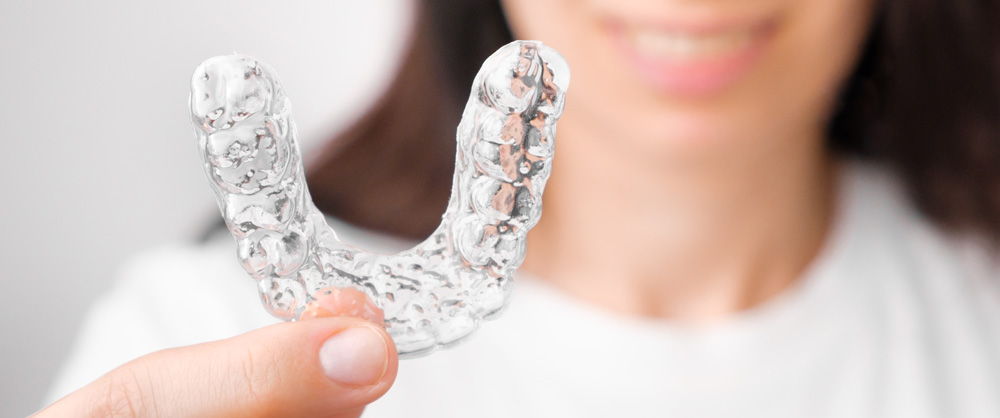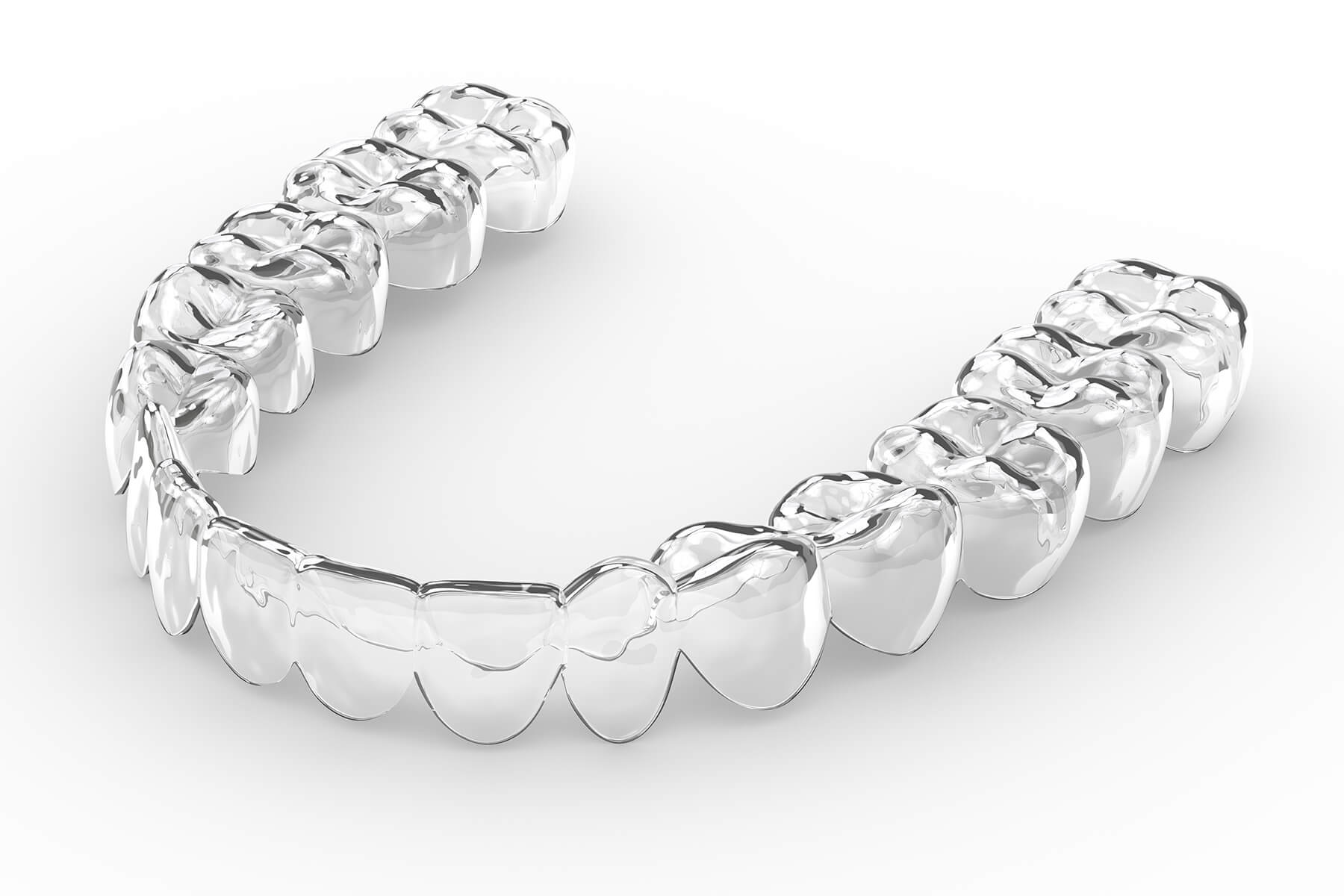Extraction cases
| The elastic properties of clear aligners would generate a clockwise force moment in the anterior part of the arch that would cause the incisors to incline lingually and extrude. The middle part of the arch will receive intrusive force components, that will tend to intrude the premolar and cause the molar to tip forward, due to the counterclockwise force moment in the posterior segment. With the extrusion of the incisors, interferences are created in the anterior area and a posterior open bite is set. |  |
Compensations:
–Add curves of Spee. Plan a reverse curve of Spee on the lower arch and an exaggerated curve of Spee on the upper arch during the movements. This is made by planning some extrusion of the premolars, buccal inclination of the incisors’ crowns, intrusion of the incisors and distal tipping of the molars.
How to achieve extrusion of premolars?
Attachments and/or use a vertical intermaxillary elastic on the maxillary and mandibular premolar, over bonded buttons. The extrusive force of the elastics will oppose the intrusive force generated by the aligner, balancing the force system and keeping the aligner well-adapted. Some authors recommend the use of bite ramps on the lingual surfaces of the maxillary incisors to help the intrusive effect on the mandibular incisors; but, during anterior retraction, where the lingual inclination of the incisors is already challenging, the occlusal contact on those bite ramps would generate a force applied lingually to the center of resistance of the incisors, that would cause a force moment that would make them tip lingually, worsening the final outcome.
–A six-degree distal inclination on the molars was suggested to compensate mesial crown tipping tendency. By doing this, notice that the aligner will tend to disadapt on the mesial cusp, so it is important to increase the retention of the aligner by adding an attachment on the mesial cusp or bonding buttons to use vertical elastics. These precautions will make it more likely that the aligner keeps the tracking the whole movement.
-If we consider the bow arch effects of the aligners and the root volume of the molars, the chance of having heavy side effects of lingual inclination and extrusion of the incisors is even bigger. To compensate for that, the buccal crown inclination of 10 degrees must be added as an overcorrection, as well as a marked intrusion on the incisors
__________________________________
Aligners and extractions can also result in:
- Incisor extrusion and torque loss.
- 3mm of posterior anchorage loss and intrusion of molars.
Correction with TADs:
- TAD placed in upper incisor region, and elastic wear. 2 anterior labial TADs – intrude anterior teeth. Elastic from palatal cut out of aligner over the occlusal surface to labial TAD.
- 2 posterior buccal TADs preserve anchorage. Elastic wear from canines to TAD for retraction.
Anterior upper retraction (without TADs):
In cases of extractions with maximum anchorage, alternate batches of 8-10 aligners in which we exchange movements of the incisors and canines. This increases anchorage and root displacement by allowing intra-treatment rest time.
The professional can work dividing all the anterior retraction in periods of canine distalization combined with incisors intrusion and protraction, alternated with partial retraction of the incisors. This approach, depending on the needs of each case, could be associated with the use of intermaxillary elastics, which would provide more control of the undesired effects that may appear, therefore, making the movements more predictable.
Instructions for Tech:
“Move The Canines for 2 mm and for every moved 2 mm apply 2 degrees distal root tip (virtual gable bend). Then stop the Canines and move distally 2 mm the incisors and for every 2mm distal movement – apply 2 degrees distal root tip and so on, till the closure of the extraction case. Apply 3-5 degrees of lingual root torque during retration.“
“When mesializing 6’s: add vertical rectangular attachment mesially and reduce velocity 50 percent and add constant 5-degree distal crown tipping on 6 while mesializing it.

